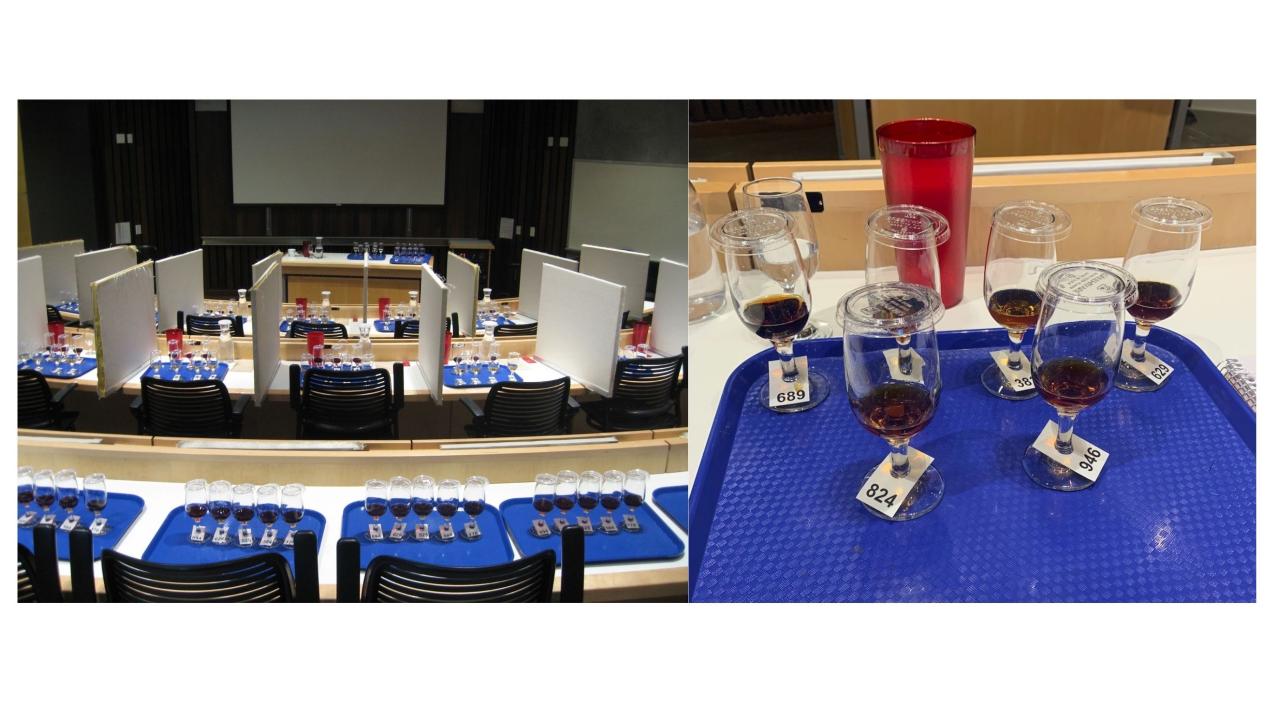
VEN 125L Sensory Evaluation of Wine Laboratory
Hildegarde Heymann
The sensory evaluation of wine laboratory tries to do four things simultaneously, in only 10 weeks! The four objectives are:
1. To teach students to listen to and to trust their own noses and tongues;
2. To teach students to conduct sensory-related studies, including the data analyses, so that they know enough to ask others to do so;
3. To show students some of the practical uses of descriptive analysis (DA)
4. To expose students to as much wine as possible.
I try to complete objective 1 through the use of reference standards. I especially want to expose students to wine faults, since specific anosmias may prevent a specific student from smelling these. In those situations, they will then need to rely on others to determine if a wine is flawed. Additionally, potential winemakers also need to be aware when they are overly sensitive to an odor, whether it is a flaw or not, they may then perceive the wine very differently from someone who is not overly sensitive to that odor. Once again, in these cases, they would then have to rely on the noses of others.
To reach objective 2, students set up sensory tests, statistically analyze data from the sensory tests set up by them and others, and lastly, interpret and write up their results. I realize that most of my students will probably never perform a sensory test themselves but they may ask others to do so for them and then they will need to know what to ask for. Additionally, all winemakers are consumers of sensory data. Every time a company wants to sell a winemaker a widget, based on the sensory data collected by the company, the winemaker needs to know enough to be able to ask all the relevant questions about the quality of the data collection, statistical analyses, and data interpretation. There are a lot of expensive widgets sold in the wine industry on very, very questionable sensory data. Caveat emptor.
For objective 3, we perform three abbreviated DAs, one on dry leaf tea, one on red wines, and one on Vermouth. For these, the students generate the terms that discriminate among the samples and then they evaluate another set of samples using the generated terms. Lastly, we do a blending exercise in which the students generate terms to describe a specific wine. They are then divided into groups, given a set of potential blending wines and asked to recreate the original wine profile. The next week we do a DA of the team blends against the original wine to see which team came the closest.
Lastly, for objective 4, each week at the end of the data collection for that week the students receive six “savor” wines. These wines are part of a theme for each week and are chosen to show various aspects of winemaking. We have had unintentionally oxidized wines, intentionally oxidized wines (madeira, sherry, etc.), other dessert wines, sparkling wines from different regions, rose wines, obscure red, and white varietal wines, wines with similar varietal blends but vastly different prices, etc. For this portion of the class the students are only asked to interact with the wine and make notes for their own educational purposes. It is frequently the most fun part of the class.
